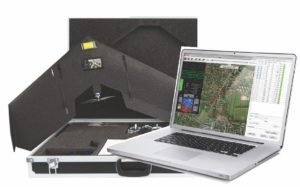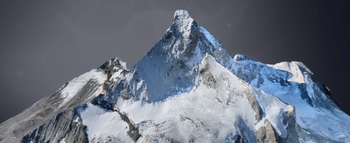
SAR 2 – The story goes on!
Referring to my last article about radar remote sensing I decided to continue with the topic and from time to time will focus my writings on information and latest happenings in this subject. As a European, today I want to concentrate on European activities towards SAR. Recently, there was a lot to hear about Sentinel-1, ESA’s earth observation satellite that is going to be launched in spring 2014. Beside an optical sensor Sentinel-1 is going to be equipped also by SAR, which is less known and is the topic of this article.
With the missions ERS-1, ERS-2 and ENVISAT, ESA produced a continuous time series of radar images for 20 years. The ERS-1/ ERS-2 constellation (same orbital parameters) delivered radar images that are interferometrically compatible. Since the cease of ERS-2 in 2011 and the failure of ENVISAT in 2012 the provision of radar information has been suspended resulting in a monitoring gap, which is disadvantageous for long term studies. Sentinel-1 is planned to pursue ESA’s radar initiative by next year, whereas a second radar sensor will be launched one year later. The Sentinel radar mission is part of the European Radar Observatory, a polar orbiting satellite system for the continuation of SAR operational applications. It was set up in the frame of GMES (Global Monitoring for Environment and Security, now known as Copernicus) that is the joint initiative of the European Commission and the European Space Agency, designed to support Europe’s goals regarding sustainable development and global governance of the environment by providing timely and quality data, information, services and knowledge. GMES services so far rely on the availability of radar and optical imagery of ENVISAT, ERS, Radarsat, SPOT and Landsat. The proposed Sentinels provide the necessary continuity of measurements. Like the previous missions of ESA, Sentinel is going to continue with C-band (roughly around 5cm wave length) and is envisaged as a two satellite system operated as a constellation for maximized coverage/repeat cycle aiming a temporal resolution of 3 days. The corresponding wavelength has been found useful in sea ice surveillance, one of the major points in GMES. Imaging radars equipped by C-band are generally not hindered by atmospheric effects and are capable of ‘seeing’ through tropical clouds and rain showers. – In contrast, X-band is reflected by heavy precipitations clouds and therefore used for detecting those. Its penetration capability with regard to vegetation canopies or soils is limited and is restricted to the top layers. Sentinel-1 radar sensor will have an interferometric wide swath (wide scan stripe of 250km and a ground resolution of 5x20m) and wave mode, a rapid data dissemination and data provision within an hour of acquisition.
With those features Sentinel-1 meets the user requirements of GMES. The radar imagery is going to be useful for following purposes that are similar to those described in my forst article about radar remote sensing:
OBJECTIVES
Monitoring European marine environment (North Atlantic, Arctic Sea)
- Daily surveillance of marine transport corridors to detect illegal discharges and gather prosecution evidence
- oil spill detection especially in North Atlantic waters
- Monitoring activities by flag state vessels in third party waters, monitor major shipping routes to detect illegal activities on a regular basis with daily coverage of the European Economic Zone.
Monitoring the arctic environment and sea-ice zones
- Daily monitoring of ice-infested areas along the major transport routes.
- Sea ice and iceberg monitoring
- Arctic habitat and glacier monitoring
Monitoring and assessing land surface-motion risks
- 2-Weekly measurements of subsidence over all major urban areas;
- Regular surveillance of transport infrastructure (every two weeks in the case of gas pipelines).
Open Ocean Surveillance
- Oil Spills
- Wave information
Forest monitoring
- Forest Monitoring for Climatic Change
- Forest Monitoring Inputs for National Greenhouse Gas (GHG) Reporting
- Forest Monitoring Inputs for CDM Projects
- Forest Monitoring for Sustainable Forest Management
- Clear Cut Mapping and Monitoring Service
- Sub-National Forest Information Update
- Forest Monitoring for Environmental Issues and Nature Protection
- Land Cover and Forest Indicator Service
Water management and soil protection
Forest fire and flood management
Crop monitoring
Application examples

ASAR (ENVISAT) C-band Image near Svalbard (4 April 2004). Source: ESA.

False-colour map of the measured deformation superimposed on the SAR image amplitude of Napoli Bay (Italy). The red coloured plots at the Western edge of the bay are located around the city of Pozzuoli, which is known for the ‘bradisismo’, an Italian word referring to sinking or lifting ground motion and a phenomenon that is known since the Roman tmes 2000 years ago. Source: ESA.

Forest Monitoring Concept and example of ASAR-based Change Detection for Fast Response to Illegal Logging in C-band (suspect spots in yellow). Source: ESA.

Forest Fire Damage Assessment derived from ERS C-Band Multi-Temporal
Interferometric SAR (left) and NOAA AVHRR hot spots (right). Source: ESA.
Source: ESA, Sentinel-1 radar mission






